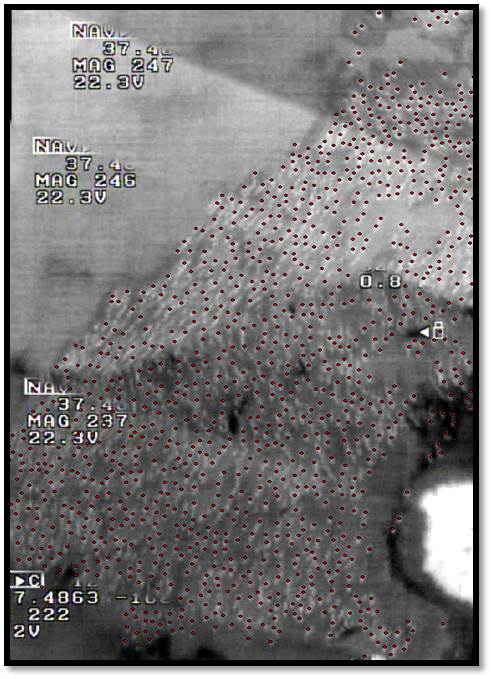The USGS and the USFWS view small Unmanned Aircraft Systems (sUAS) as an emerging technology to advance safe and cost-effective methods to conduct Sandhill crane and other wildlife surveys. This project builds on the success of the first Federal Aviation Administration-approved daytime sUAS flights in 2011 at Monte Vista National Wildlife Refuge (MVNWR), Monte Vista, Colorado. In 2012, the first-ever sUAS nighttime flights were conducted to determine the number of roosting Sandhill cranes on five roost areas in MVNWR. Ten flights were conducted over 4 hours between 150 and 300 feet above ground level along transect lines spaced at 150 feet apart using a thermal infrared video sensor. The video imagery was post-processed utilizing various photographic and remote sensing software packages. The total number of Sandhill cranes counted was 14,658 across the five roosts.
Thermal infrared image mosaic of Sandhill cranes on a roost; red dots show individual cranes at Monte Vista National Wildlife Refuge, Colorado. USGS photo.


